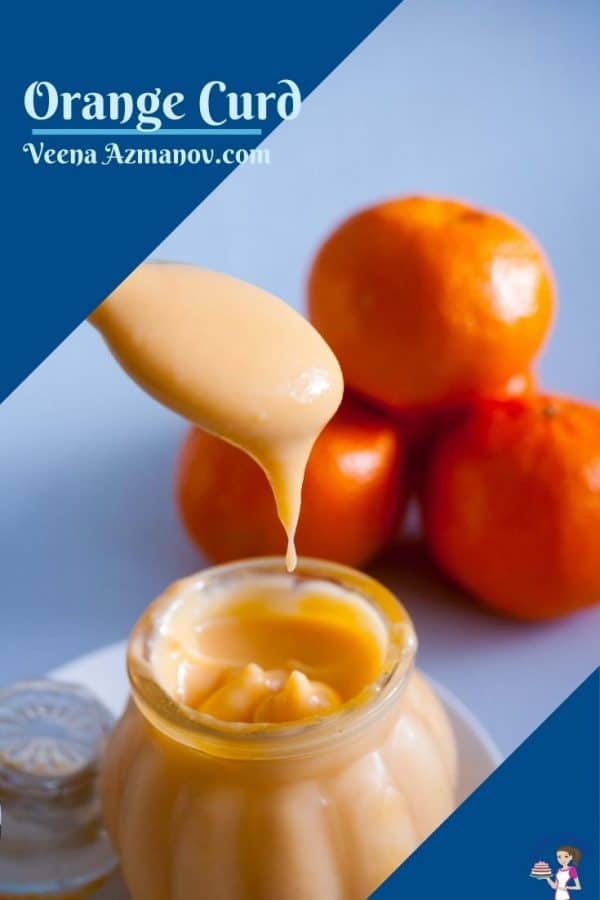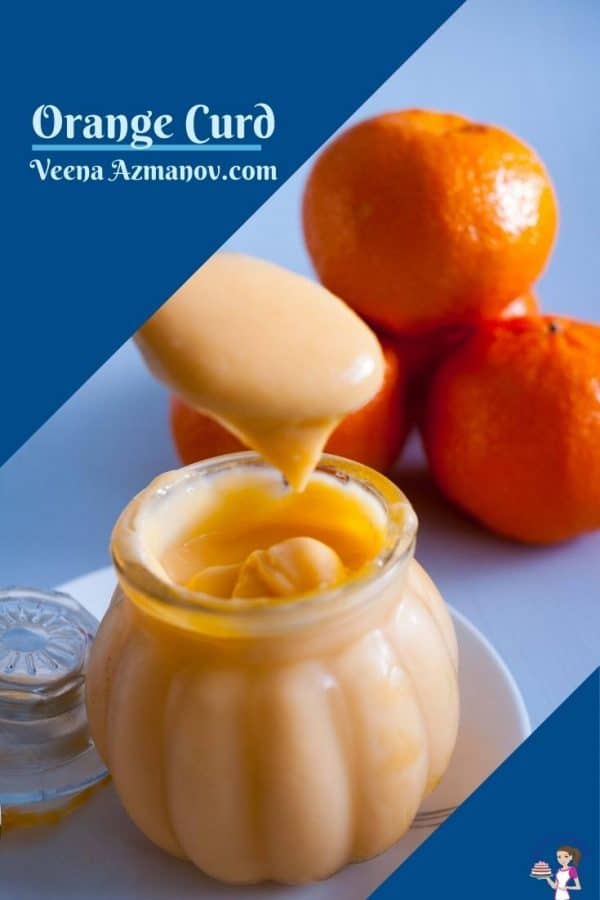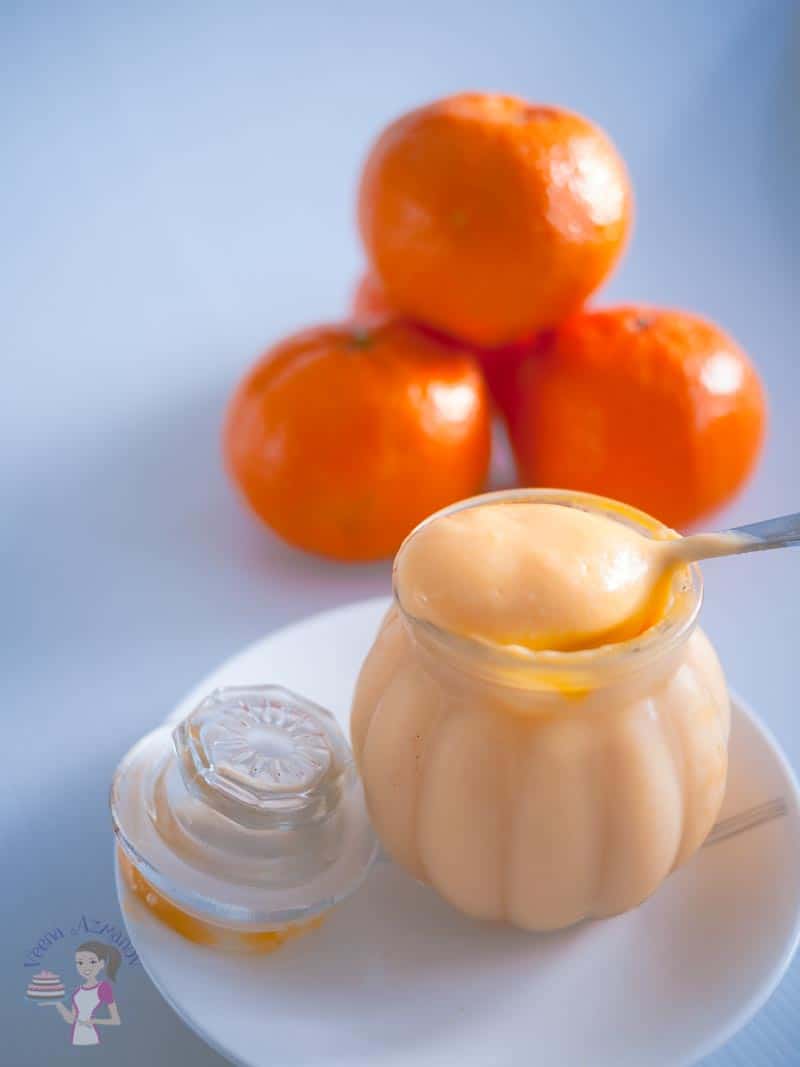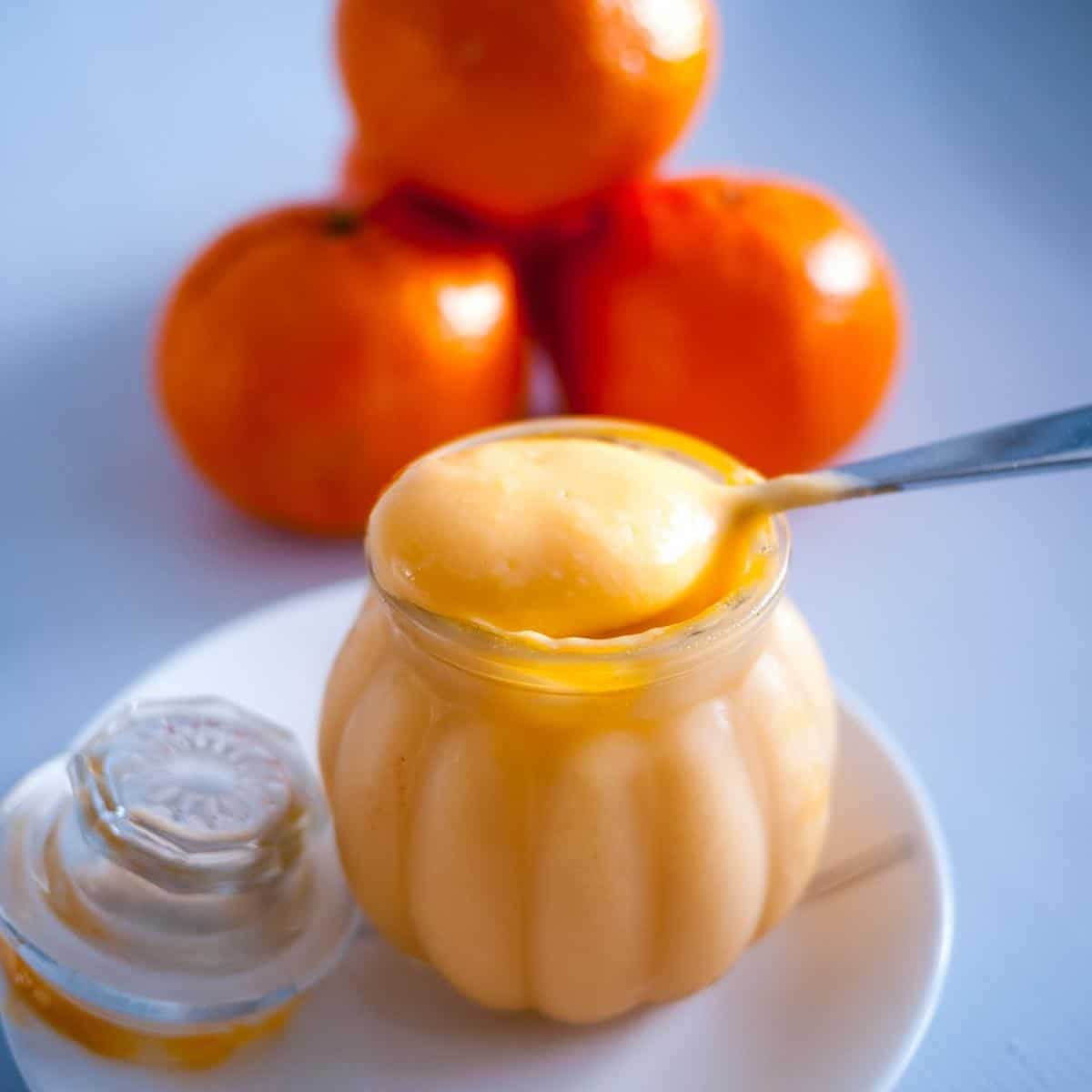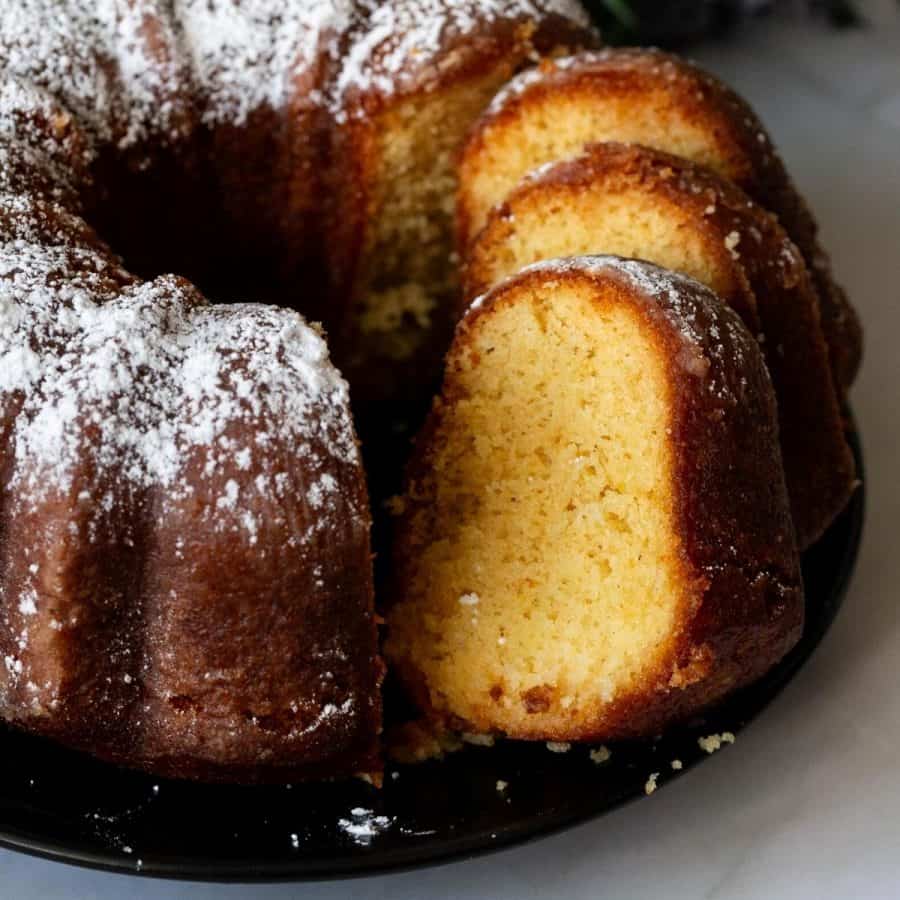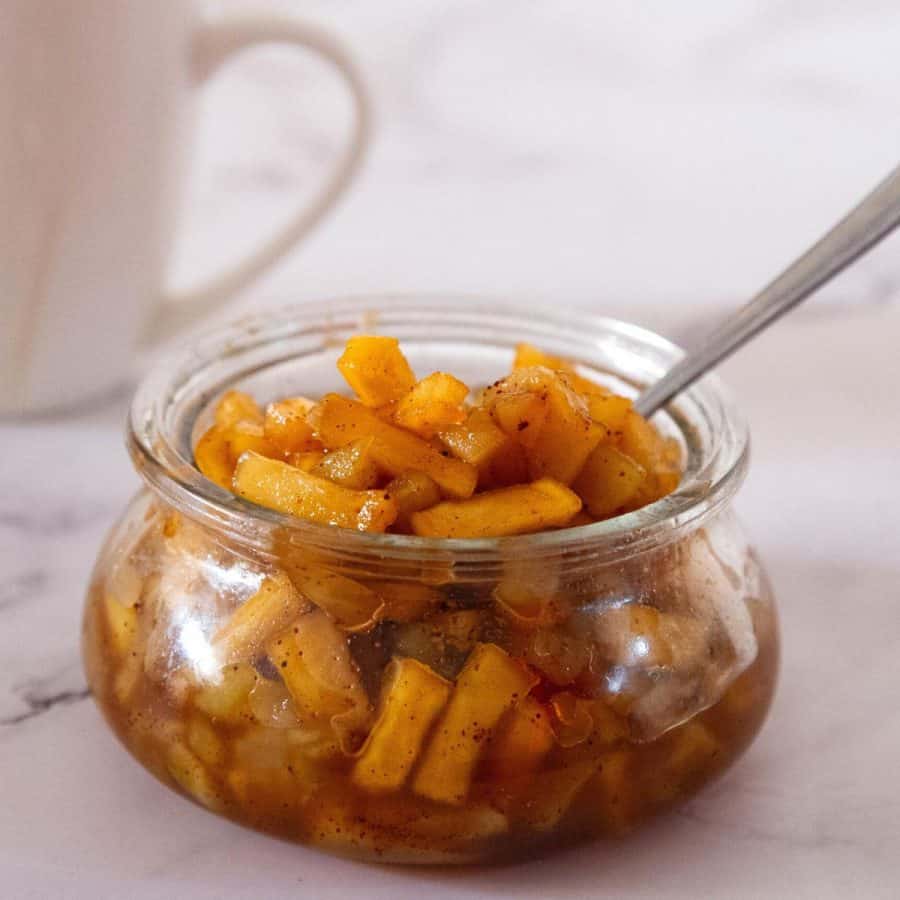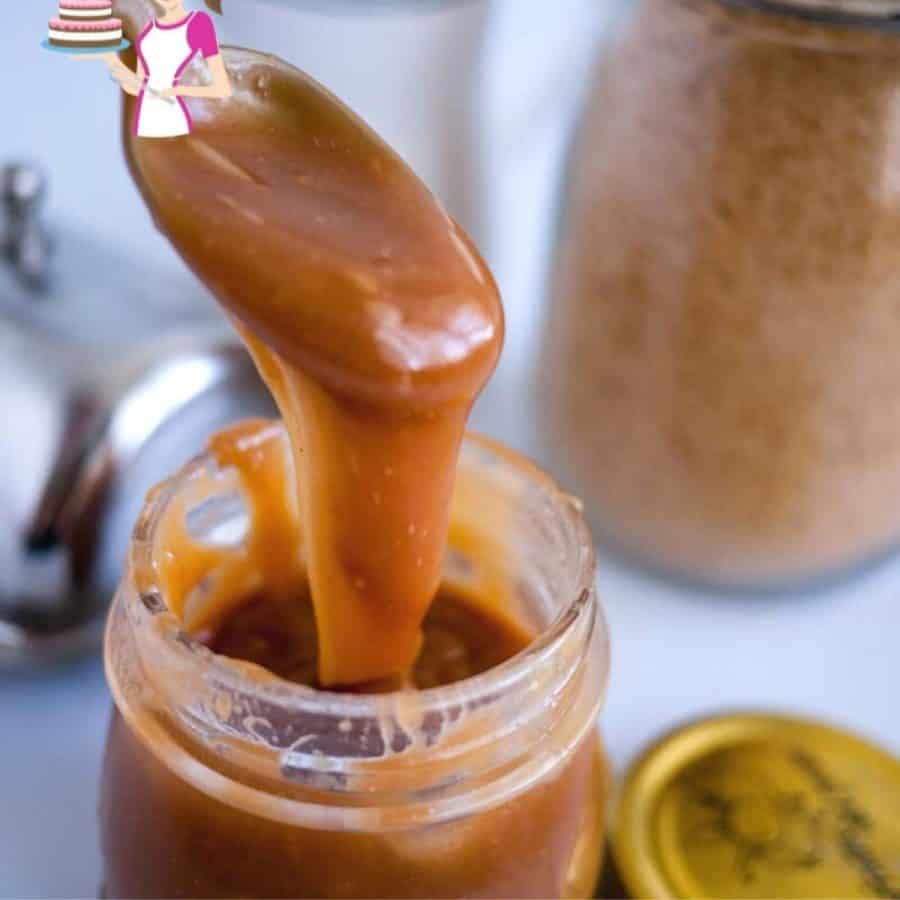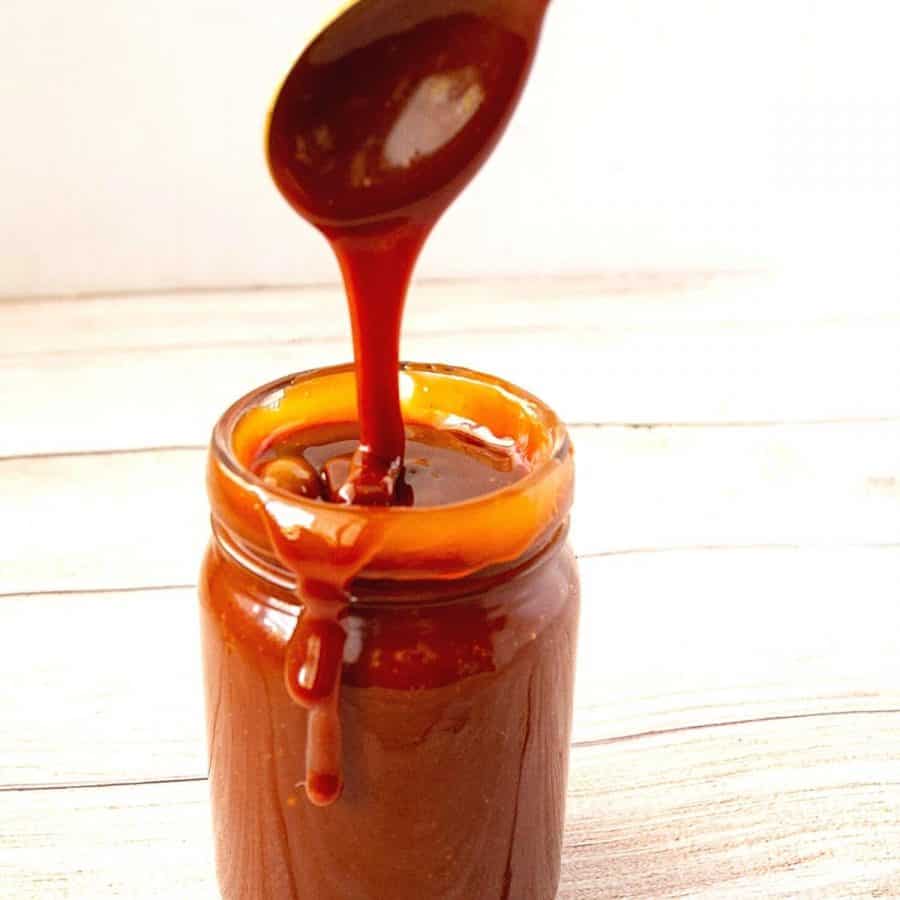Orange curd with fresh oranges is a must-have. And, I mean must-have. The sweet oranges in a custard-like filling are out of this world. And, I love to add some lemon in there to give it a little zing. By now you must have tried my lemon curd or at least seen my lemon curd video. It’s simple, easy and really luxurious. It’s a no-fail method because I cook it low and slow. As a result, you will never have a curdled curd whether you make lemon or orange curd. Also, did you know the options to make fruit curd using this exact same method are endless? I love using citrus fruits because I really enjoy the tart flavors. And, if you love fruit curd you must substitute the orange juice in this recipe with any other fruit juice, such as tangerine, passion fruit, limes, or grapefruits. I’ve even made mango and pineapple. Pineapple curd is absolute heaven.
Why is this the best recipe?
Freshness: This recipe uses fresh orange juice and zest, which gives the curd a vibrant, citrusy flavor that you just can’t get from store-bought versions. Simple Ingredients: With just a few basic ingredients like oranges, sugar, eggs, and butter, this recipe is easy to make and doesn’t require any special equipment. Versatility: Orange curd can be used in a variety of ways, from spreading it on toast to filling cakes and tarts. It’s a versatile condiment that adds a burst of flavor to any dish. Homemade Goodness: Making your own orange curd allows you to control the ingredients and customize the flavor to your liking. Plus, there’s something special about homemade goodies! Healthier Option: Compared to store-bought versions that may contain preservatives and additives, this homemade orange curd recipe is a healthier option as you know exactly what’s going into it. Cost-Effective: Making your own orange curd at home can be more cost-effective than buying it pre-made, especially if you have access to fresh oranges at a good price. Plus, you can make a big batch and store it in the fridge for later use.
Ingredients and substitutes
Oranges – Use the measure of orange juice not the number of oranges when making this recipe. So if a recipe says 1/2 cup juice (3 to 4 oranges) usually the number is a guide – the actual measurement you want to use is 1/2 cup or 60 ml. This can make a big difference. Avoid the membranes and seeds when juicing the oranges these can impart a bitter flavor to the curd. Lemon – A little tart taste in contrast to the sweet seasonal oranges works a treat. Unless of course, you have sour oranges than lemons won’t do justice. Instead, I suggest you add all orange juice. Caster Sugar – Caster sugar is usually a fine grain sugar. Use a fine grain sugar that will dissolve easily in the eggs. If you don’t find caster sugar just pulse the regular sugar in a food processor and that will help give you a smooth finish. The amount of sugar used here presumes you have beautiful sweet seasonal oranges. If, however, the oranges are not sweet I highly recommend you add a few tbsp more of sugar. And yet, NO more than 1/4 cup or 30 grams though. Egg yolks – The color of yolks will determine the end color of your orange curd. So if you use light yolks you will have pale yellow color curd. A bright golden yellow or orange is much preferred. I’m using free-range eggs that have a nice orange color today. Artificial colors – I never use any artificial coloring in my lemon curd, but often I use orange curd in my cakes as filling. So sometimes I do add a dab of orange color just so it will be obvious on the cake. Orange color layers look nicer between two vanilla or chocolate layers.
Easy orange curd recipe
Measure all ingredients before you start. Cut the butter into cubes – keep chilled. Place oranges and lemon in the microwave for 10 seconds before you cut and squeeze this will make it easy. Warm the orange juice for about 30 secs. Use a double boiler or make your own – To make your own add an inch of water to the saucepan with a heatproof bowl on top. The water should not touch the top bowl.Pro tip – we use a double-boiler to prevent the eggs from getting scrambled with direct heat. In the top bowl of your double boiler – Add egg and yolks, sugar, salt, cornstarch, and zest. Whisk until light and fluffy – sugar should almost melt. Add orange juice and lemon juice slowly into the egg mixture. Now place the bowl on the double boiler Continue to stir on medium heat. The mixture should cook with just the steam from the water in the saucepan below.Pro tip – if you cook on low it will take forever to thicken. Since we are cooking on a double boiler you can keep the heat medium heat and stir continuously. After about 8 to 10 minutes – you will notice the foam that was caused by whipping the egg mixture will slowly disappear and the mixture will start to thicken. Continue to stir until it coats the back of your wooden spoon or spatula. Remove from heat. Gradually add cubes of butter one at a time. Make sure each piece is well incorporated. The mixture will continue to thicken as it cools.Pro tip – the cool butter stops the cooking and makes it smooth and velvety. Add it slow but not too slow or the last of the butter won’t incorporate in cooled curd. Once all the butter has been incorporated, strain it through a mesh or a strainer to remove the zest. This will also give you a smooth creamy curd. I like to transfer mine to a mason jar.
Storage
The curd is best stored in a mason or glass jar in the fridge. The presence of eggs in lemon or orange curd makes it a perishable filling. So any item that has homemade lemon or orange curds such as cakes and pie needs to be placed in the fridge. Avoid keeping fruit curd or citrus fillings in metal containers as it can react with the metal. Egg yolks can react with the metal such as aluminum and cause it to become green in color.
Tips for Success
Use Fresh Oranges: Freshly squeezed orange juice and zest will give your curd the best flavor. Avoid using bottled juice or zest, as they may not have the same fresh taste. Strain the Mixture: Straining the curd after cooking will help remove any bits of zest or cooked egg, resulting in a smoother texture. Whisk Constantly: Whisk the mixture constantly while cooking to prevent the eggs from scrambling and to ensure a smooth consistency. Low Heat: Cook the curd over low heat to prevent it from curdling. The mixture should thicken gradually. Chill Before Serving: Allow the curd to cool and set in the refrigerator for at least an hour before serving. This will help it thicken further and develop its flavor. Store Properly: Store any leftover orange curd in an airtight container in the refrigerator. It will keep for about a week. Experiment with Flavors: Feel free to experiment with different citrus fruits or add spices like cinnamon or cardamom to customize the flavor of your curd.
Creative variations you can try with your orange curd:
These variations can be used in the same way as regular orange curd and will add a unique twist to your recipes!
Orange-Lemon Curd: Combine the zest and juice of both oranges and lemons for a tangy citrus flavor. Orange-Ginger Curd: Add finely grated fresh ginger to the orange curd for a spicy kick. Orange-Lavender Curd: Infuse the orange zest with dried lavender flowers while making the curd for a unique floral flavor. Orange-Coconut Curd: Add a splash of coconut milk or shredded coconut to the curd for a tropical twist. Orange-Chocolate Curd: Stir in some melted chocolate or cocoa powder to the finished curd for a decadent treat. Orange-Almond Curd: Add a drop or two of almond extract to the curd for a subtle nutty flavor. Orange-Raspberry Curd: Swirl in some raspberry puree or add fresh raspberries to the curd for a fruity combination. Orange-Cinnamon Curd: Mix in some ground cinnamon or a cinnamon stick while cooking the curd for a warm, spicy flavor.
Creative ways to use orange curd.
Orange curd, with its bright, tangy, and sweet flavor, can be utilized in many delightful ways beyond just spreading on toast. Here are some creative ways to use orange curd:
Layered Desserts: Use orange curd between layers of cakes or in trifles. Macaron Filling: Use it as a filling for macarons for a citrusy twist. Yogurt or Ice Cream Topping: Swirl orange curd into yogurt or ice cream for added flavor. Pancake or Waffle Topping: Spread some orange curd on your morning pancakes or waffles instead of syrup. Tarts: Fill pre-baked tart shells with orange curd and top with fresh berries or a meringue. Cookies: Sandwich two shortbread cookies with a dollop of orange curd in between. Cocktails: Stir a spoonful into a cocktail for a zesty, sweet twist. Popsicles: Mix orange curd with yogurt and freeze for a creamy citrus popsicle. Smoothie Booster: Add a dollop to your morning smoothie for a flavor punch. Fillings: Use orange curd as fillings in crepes, doughnuts, or croissants. Roulade: Spread orange curd on a sponge cake before rolling to create a citrus roulade. Cheesecake: Swirl orange curd into your cheesecake batter before baking or spread it on top after it cools. Salad Dressing: Mix it with olive oil, vinegar, and seasoning to create a tangy citrus salad dressing. Grilled Meats: Serve orange curd as a sauce on the side of grilled chicken or pork. Meringue Pies: Use orange curd as a base for a meringue pie, then top with fluffy meringue and broil until golden. Muffin or Cupcake Filling: Inject a small amount of orange curd into the center of freshly baked muffins or cupcakes for a citrusy surprise. Parfait: Layer orange curd with granola and yogurt to create a breakfast or dessert parfait. Frozen Yogurt or Ice Cream: Mix orange curd into your homemade frozen yogurt or ice cream base before churning. Bread Pudding: Drizzle orange curd over bread pudding for added flavor and moisture. Panna Cotta: Top a set panna cotta with a layer of orange curd for a two-toned dessert.
Orange marmalade Easy orange cake Orange cantaloupe smoothie Orange macarons
Frequently asked questions
Did you LIKE this recipe? Save it for later. You can find my recipes on Pinterest. Follow me on Facebook, Twitter, and Instagram.Subscribe, and I’ll send you new recipes right to your inbox. Thank you for sharing - Save for later
